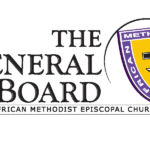By Rev Quinton William Liebenberg, Columnist
Boland Annual Conference 15th District
The 15th Episcopal District was blessed when it received Bishop Henry Allen Belin, III, and Supervisor Rita Sinkfield, Belin, Esq. After the General Conference made the episcopal assignments, he hit the ground running by immediately commencing seven annual conferences in three countries: Namibia, Angola, and parts of South Africa.
As an itinerant minister for over 22 years, I assume that every bishop assigned to an episcopal district wants to feel his presence and be judged according to his or her actions and deeds within the district, primarily and globally. What any leader cannot control is how people will eventually perceive him or her or their opinions about the leader. Everybody will eventually get to know the bishop and have their own opinion of him or her.
One significantly entrance into the fifteenth district was Bishop Belin’s unique actions of humility and gestures of care defined as “Meet and Greet.” Before, after, and during annual conferences, Bishop Belin would get in the district SUV and visit churches within that geographic area. Some are close by, and others are a 2 to 3-hour drive. Pastors and members opened their churches and met with huge excitement and appreciation their episcopal leader. Though the soul is eager, we have observed that the body is tired. The task was greater than the sacrifice. Here, Bishop Belin demonstrated his empathetic care and concern for the people of the 15th, where they stay, how they stay, where they worship,
The bishop focused on three pertinent areas with the attendees of the congregation: (1) A brief history of the congregation, (2) Something interesting about the congregation, and (3) Words of encouragement by the bishop to the congregation and pastor.
The concept of meet and greet has now shifted to a new meaning and understanding. Its potential has increased exponentially, especially when the bishop initiates the meet and greet. The reports of pastors at the annual conference were now challenged by the actual visit of Bishop Belin to their assignments. His presence in a congregation’s context births a lifetime achievement. To qualify this statement, in some cases, it can become a huge expense if congregations invite their bishop to visit their church. Here, we have Bishop Belin expressing his will to visit a congregation. No special ceremony, dedication, burning of mortgage, or invitation to preach has been made. This servant leader desires to know the context of the land and its people.
Just when we thought this act was only coupled to the annual conferences, Bishop Belin and our visiting guest General Officer, the Rev. Dr. Galand F. Pierce, the Executive Director of Christian Education, hopped in the SUV at the close of our 15th District Planning Meeting and travelled into the Montagu District approximately 2 hours’ drive from the site where we met.
Why is this a noteworthy act? Servant leaders have enough knowledge and understanding to put the needs of others before their own; indeed, this is a remarkable deed of appreciating the members and various congregations for their commitment and loyalty to the mission, loyalty, and love to God and the African Methodist Episcopal Church. This act can inspire young and current pastors to show the importance of meeting and greeting their members. Simply put, home visits and house visitations by the pastor. In the context of the 15th Episcopal District Meet and Greet, members in their habitat are one of the priorities for both members and pastors. In our context, members still expect the pastor to meet and greet them at their homes. The example of the episcopal leader can now be further developed and defined as the principle of servant leadership. Make every member count–where they stay, how they stay, and what kind of religious lifestyles they express.
The actions of a servant leader are not to be taken lightly. Non-verbal and verbal communication reflect deep theological insights. By observing a leader’s actions, one can establish his or her religious depth, sincerity, and love for their calling. The meet and greet sessions can be a greater deed than just listening to a pastoral report at the seat of an annual conference, district planning, or midyear. By reflecting on Bishop Belin’s entrance into the 15th District, can we in the 15thassume that Bishop Belin’s Lesson 1 is concern for the sheep by entering their space of reality? Or, to define more clearly as a statement: Let’s get to know where our people are staying, how they are staying, and what their religious expressions are.
Indeed, some of the best sermons are not preached but observed in the preachers’ actions. Bishop Belin’s actions are further supported by the district theme: “Family First!” In my view, actions speak louder than words.
I look forward to many more lessons not spoken but observed. Surely, a lasting impression was made by simply applying a servant leadership attitude to meet and greet us.






Dear Rev. Quinton William Liebenbery,
You have made an excellent observation regarding Bishop Henry Belin III.
I have known him since he was a toddler. And have watched him grow up over the years.
And I know he is a Servant Leader from the Heart. And so is his wife, Rita Sinkfield Belin.
We are so thankful and grateful to God to give them the opportunity to serve the people of the 15th Episcopal District.
Thank You.